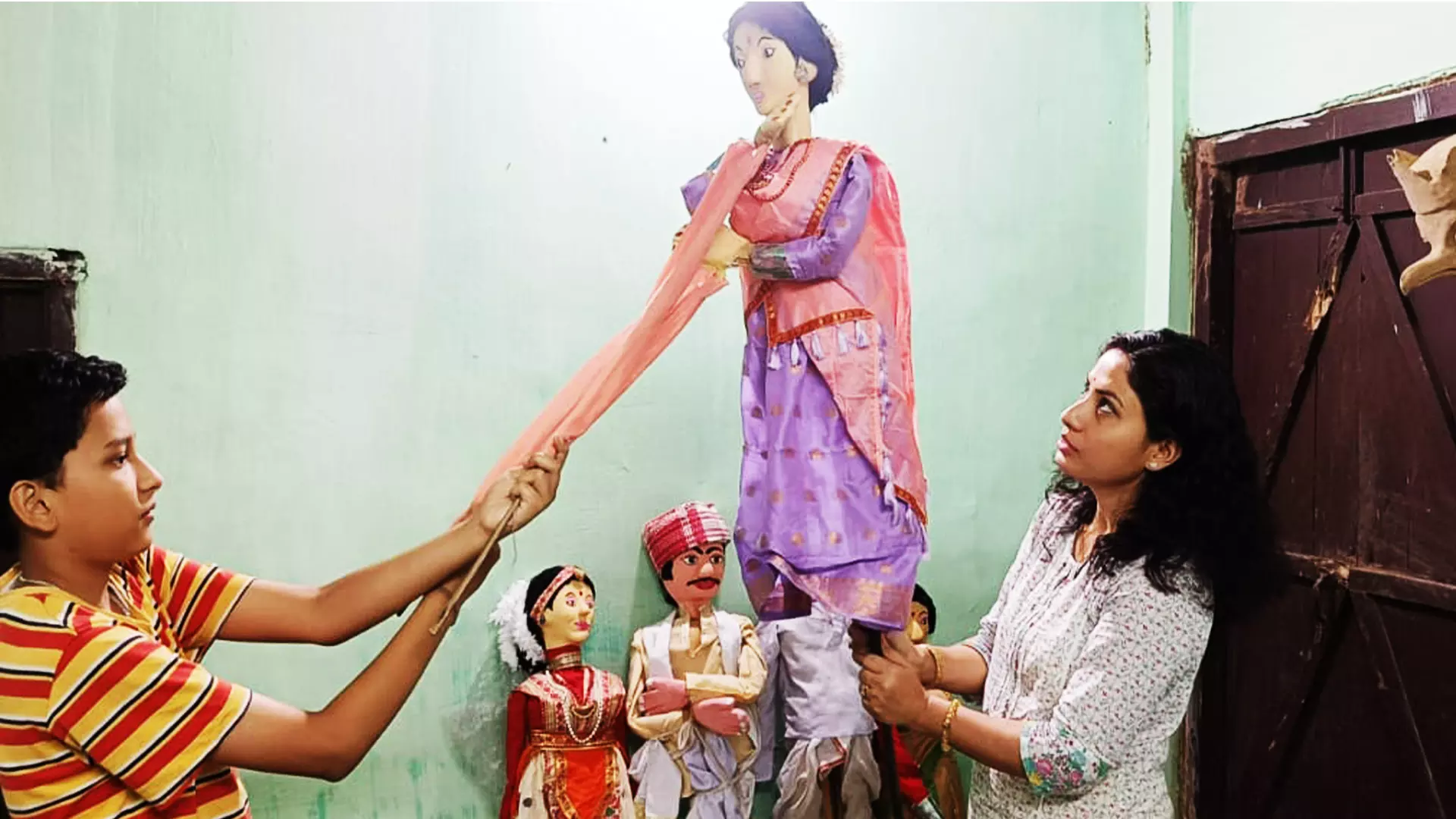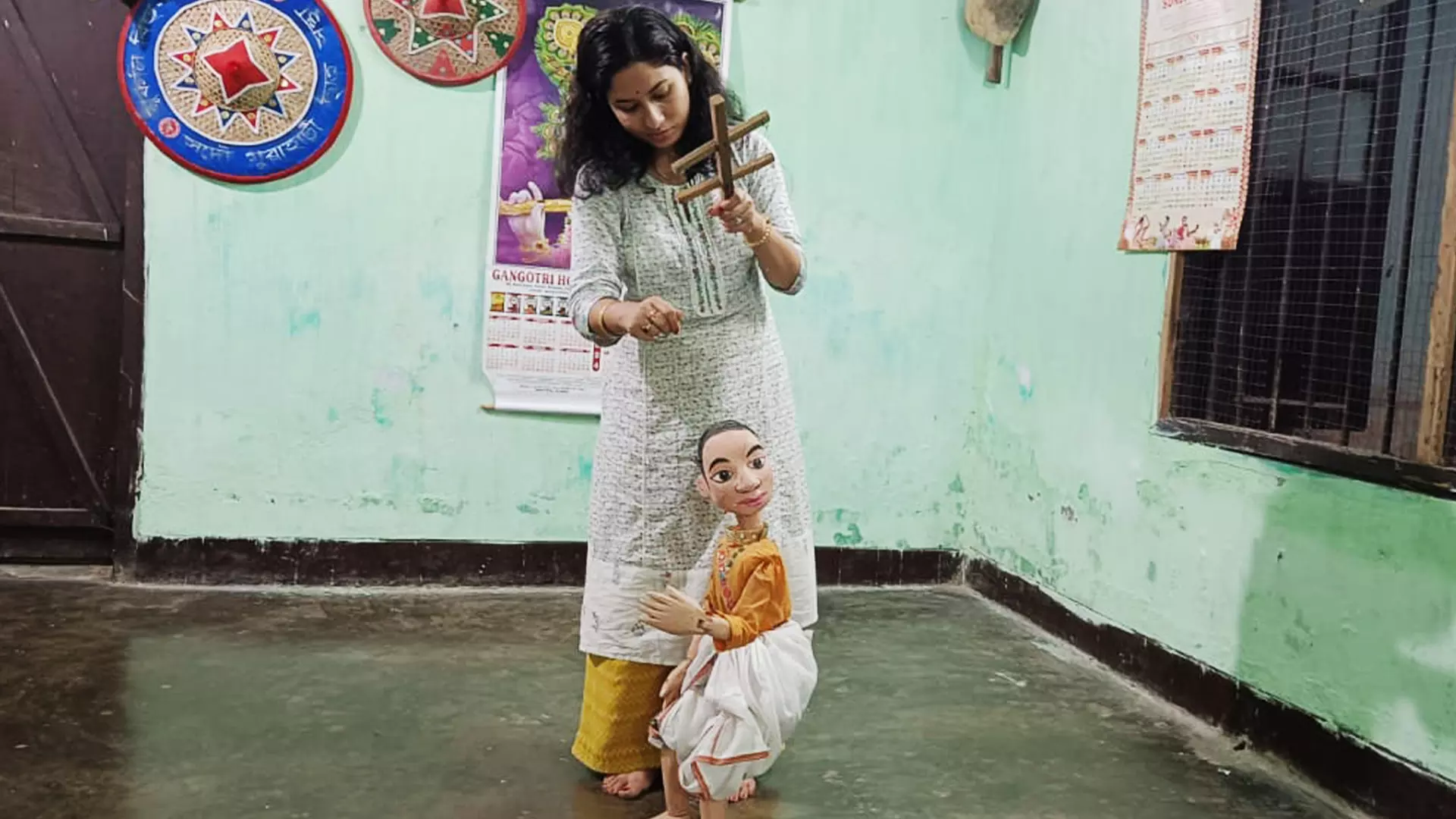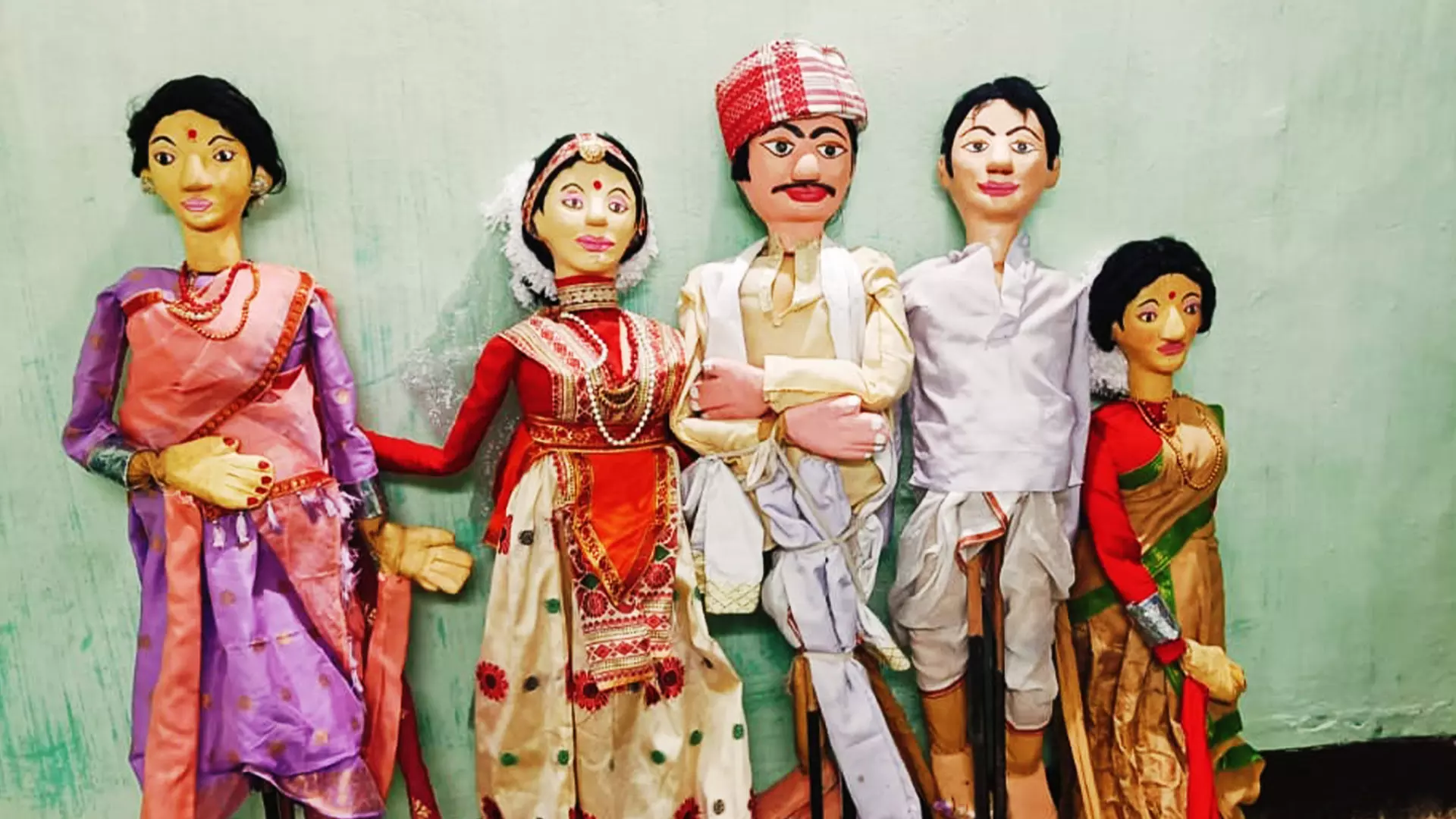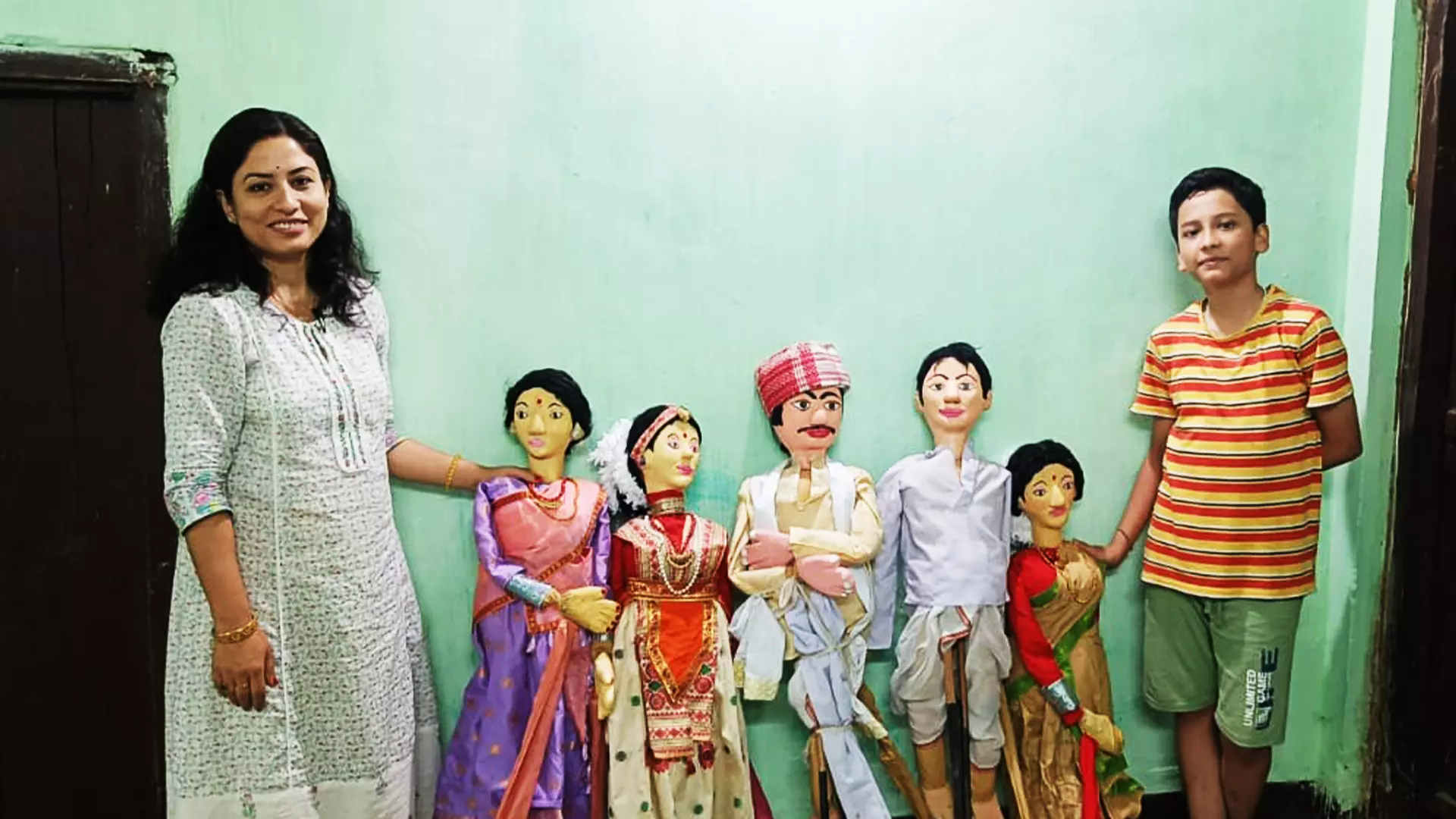
- Home
- India
- World
- Premium
- THE FEDERAL SPECIAL
- Analysis
- States
- Perspective
- Videos
- Sports
- Education
- Entertainment
- Elections
- Features
- Health
- Business
- Series
- In memoriam: Sheikh Mujibur Rahman
- Bishnoi's Men
- NEET TANGLE
- Economy Series
- Earth Day
- Kashmir’s Frozen Turbulence
- India@75
- The legend of Ramjanmabhoomi
- Liberalisation@30
- How to tame a dragon
- Celebrating biodiversity
- Farm Matters
- 50 days of solitude
- Bringing Migrants Home
- Budget 2020
- Jharkhand Votes
- The Federal Investigates
- The Federal Impact
- Vanishing Sand
- Gandhi @ 150
- Andhra Today
- Field report
- Operation Gulmarg
- Pandemic @1 Mn in India
- The Federal Year-End
- The Zero Year
- Science
- Brand studio
- Newsletter
- Elections 2024
- Events
How an Assamese puppeteer is trying to save 'putola nach' with strings of innovation and passion

Award-winning Assamese artist Binita Devi refuses to believe that "puppetry is a dying art". It has been two decades since the 38-year-old Devi dedicated her life to reviving puppetry or putola nach (in Assamese, putola is a doll and nach is dance)."I can't call it a dying art as practitioners like me are trying our best to revive puppetry in all its grandeur and glory," she...
Award-winning Assamese artist Binita Devi refuses to believe that "puppetry is a dying art". It has been two decades since the 38-year-old Devi dedicated her life to reviving puppetry or putola nach (in Assamese, putola is a doll and nach is dance).
"I can't call it a dying art as practitioners like me are trying our best to revive puppetry in all its grandeur and glory," she smiled.
The Guwahati-based puppeteer and actor has travelled the length and breadth of Assam to learn traditional puppetry or puppet theatre from the last of the few master craftsmen in the Northeastern state.
As a teenager, when Devi was trained to become an actor, she fell in love with puppetry after watching a puppet drama at Guwahati’s Srimanta Sankaradev Kalakshetra, the cultural institution run by the Assam government’s Cultural Department, in 2003. Established in 1988, the institution is named after the medieval poet-playwright and reformer Srimanta Sankardev.

Binita Devi and her son Hardik Sharmas impromptu puppet show at their workshop in Guwahati. Photos: Maitreyee Boruah
She immediately decided to learn the art. After seeing a youngster with an immense passion for learning puppetry, the institution provided her training free of cost. She was trained in rod puppetry by Archana Talukdar and glove puppetry by Akan Deka. In 2005, she won a scholarship given to a young artiste from the Ministry of Culture, Government of India, for two years.
"With the scholarship money, I went to a tiny hamlet, Mohkhali, in Nalbari district to learn string puppetry from the ace puppeteer Bani Kanta Barman," Devi said.
The learning changed the course of her life. From there, she never looked back. Over the years, she has won several grants and awards, including the latest, Ustad Bismillah Khan Yuva Puraskar, 2022, by the Sangeet Natak Akademi, announced recently. From a wide-eyed teenager, today she is considered an exponent of puppetry.
Along with continuing her acting and puppetry career, Devi runs Surojit Academy, a performing and folk arts school, with her husband Simanta Sharma. The school is located inside the verdant campus of Assam Engineering College in Guwahati. Here students learn puppetry, acting, Bihu (Assamese folk dance) and Sattriya (classical dance of Assam), to name a few.
As an actor, who has performed both on stage and screen, Devi considers puppetry her first love. “Of course, there is no glamour in being a puppeteer, as we always remain behind the scenes. The audience doesn't know who is operating the puppets behind the curtains. But to create a play or a skit with a set of dolls for entertainment and education has a great charm.

Binita Devi pulls the strings of a puppet to make it dance.
"I have a team of eight members, together, we write, direct, compose music, design sets, make puppets and operate them. We take great pride in being part of an age-old tradition, the practitioners of which are few and far between. There is a lot of hardship. The financial gains are almost negligible. Those who are continuing with puppetry is because of their love and passion for it," said the 38-year-old.
In Assam, there are 16 puppetry troupes. Most of them are practising the art form to carry forward a rich legacy they have inherited from their forefathers. Some are first-generation puppeteers (like Devi) but the struggles are the same —lack of patronage and financial backing is forcing many talented artists to abandon the practice of puppetry.
"Many former students I have trained, have stopped working with puppets because of lack of glamour and financial rewards. I tell my students to be patient and work with curiosity and love to continue the tradition which is so rich and enriching,” she opined. Devi has trained 22 students.
The Northeast region, along with Assam, Manipur and Tripura has a rich tradition of puppetry. Puppetry is said to be practised in Assam since the 9th century AD as evidence of it was found in Kalika Purana (one of the many Hindu pieces of literature on legends and traditional lores). There are four types of puppets, string, rod, shadow and glove, with which puppeteers work in Assam.
Devi recalled her initial days when she earned Rs 1,500-Rs 3,000 a show. Today, it is Rs 15,000 to Rs 25,000 a show, depending on who has invited her troupe to perform. The puppetry show season in Assam starts from September to March.
Devi and her troupe stage five to six shows a month during the season. "As the rains start afterwards, our shows remain in a 'pause mode' for five months. That is when we conceptualise new shows and work on them," she said.
As performing puppetry shows hardly helped Devi earn money, various grants won by her supported her to carry on with the work. The hardship made the Assamese puppeteer’s resolve to bring "newness" into the art form to attract audiences and connoisseurs, especially the youth, to puppetry stronger.
Devi's most ambitious theatrical presentation is Ram Vijay, the famous bhaona (drama) by Srimanta Sankardeva with puppets. The drama depicts the episode of Sita Swayamvara from the epic tale of Ramayana when Hindu Lord Ram strings the mighty bow of Lord Shiva and breaks it to marry Sita.
In the 30-minute directorial work by Devi, there are 23 puppets and 17 artists. It is like a magnum opus in puppetry, as generally, puppet shows have fewer dolls to perform.

The traditional Assamese puppets in various colours and costumes.
Initially, in 2016 when she first conceptualised the play, she used the medium of string puppetry. "As the whole play is based on the classical Sattriya dance of Assam, I was facing difficulty in matching the steps and movements of puppets with music. The results were not satisfactory.
So I made another set of puppets, this time in rods. I also took help from a Sattriya exponent to perfect the play. As I did not know Sattiya dance and the exponent did not know puppetry, we struggled to make the drama authentic. We both were missing the nuances of art forms unknown to each other. Thus, again, the results were half-baked. Finally, I decided to learn Sattriya dance. That is when everything fell in place," she said.
It took almost four years for Devi to "perfect" the play. "Whenever we (Devi and her troupe) stage the play, we are showered with great love and appreciation. The hard work is worthwhile. I like to innovate and experiment to bring new elements into puppetry. It is the key to revive the art form," she said.
Some of her other popular plays are Bishnu Prasad Rabha, Srimanta Sankardevor Sishu Kaal, Lotkon, Champawati, Ravana Badh and Tejimola.
Puppets are made of wood and thermocol, the thermoplastic polymer of styrene which can be moulded into various objects.
Earlier, Devi was using shola pith —a plant matter from Aeschynomene species. It is dry, milky-white and spongey in nature. Thus it is easy to press and shape it into objects of art and practical use. “The plant matter is becoming rare to find. So I have shifted to thermocol to make my putolas," informed Devi.

Binita Devi and her son Hardik Sharma are happiest with their puppets.
No matter how difficult it is to stage shows, she moves forward. Her 12-year-old son, Hardik Sharma, has picked up her passion for puppetry.
Together the mother-son duo gave an impromptu performance of rod puppetry for The Federal. The female puppet, dressed in a purple and pink mekhela chador (an Assamese two-piece attire for women similar to a saree), moved to the song they sang in Assamese.
These days, Devi is working on a play based on the story, Living Tree. Showing her cardboard model of a tree, she said, "I am working on it. It is still in the initial stages. I will stage the play, once I am happy with my puppet models."
